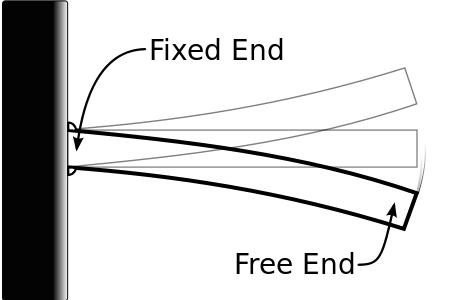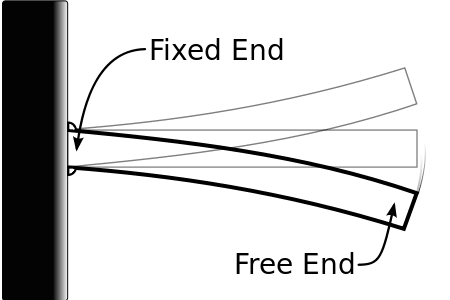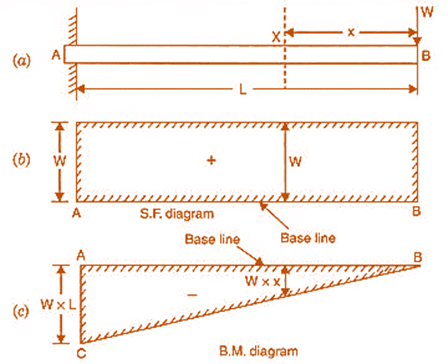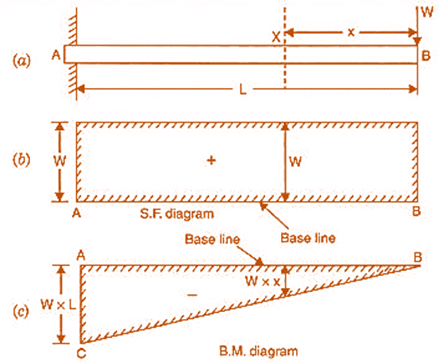It seems that there is no structure without cantilevers. Cantilevers can be seen in most buildings, bridges, and other structures.
The design and construction of the cantilevers required more attention compared to the design of the normal beam supporting at both ends.
What is a cantilever beam?
Cantilever beam is a type of beam that projects from the main structure or any boundary. The limit can be another beam, pillar, wall or any other element.
Only one end of the beam is supported, the other end is free to move. The boom can be limited laterally by a plate, a deck or a secondary beam.
Where we need booms
Projections are projections of the main structure. Projections are made to enlarge the structure from the support. For example, a cantilever plate could be considered. It is used to create additional space for the building. Furthermore, it can be designed as a cover panel.
Additionally, the boom compensates for internal rotation by rotating outward. Therefore, the structure does not change significantly when a cantilever is added, if it is smaller.
Cantilevers are also used to connect one structure to another. This happens with bridges. Extensions to the structure are also carried out using stabilizers.
Structural behavior of the cantilever arm
The structural behavior of the cantilever beam is not the same as that of the beam type. Since the beam has a free end at one edge, it can deflect freely.
When loads are applied to the boom, the greatest deflection occurs at the free end and the greatest rotation occurs at the free end. Some rotation of the boom support may occur. This depends on the rigidity of the support or boom support.


Ideally, there will be no deformation of the support if the beam is supported on a firm support.
Development of bending and shear force in the cantilever arm
A cantilever beam can be loaded with a uniformly distributed load or a point load. The calculations of the beam's bending and shearing forces are not the same in both cases.
The following figure shows the cantilever arm with a point load applied to the end.


Calculation of bending and shear forces for point end loads
The maximum bending moment and shear forces can be calculated as follows.
Bending moment = L x W
Shear force = W
Calculation of bending and shear forces with uniformly distributed loads
Bending moment = (bxL) x L /2 = wL 2 /2
Shear force = wL
Design of a cantilever beam
After evaluating the loads acting on the beam, the bending and shear forces can be calculated using the equations given in the above equations.
Once the bending moment and shear forces have been determined, the reinforcement can be calculated. One of the most important aspects in the design of cantilevers is the design of the deflections. Higher cantilever deflections can cause cracks to form in the structure and affect the durability of the structure.
Furthermore, it can also affect other non-structural components. Excessive deflection can cause damage to ceilings, cracks in walls, damage to partitions, glass facades, etc.
Some important aspects of the design are as follows.
- In addition to the general loads acting on the cantilever beam, structural loads must also be taken into account.
- If necessary, stabilizers can assist in applying structural loads.
- The calculation of bending moments, shear forces and deflections is not the same in terms of construction standards. There are different construction methods.
- In addition, it should be noted that the methods for calculating the deflection of concrete and steel cantilever beams are different.
How long are barriers made
Theoretically, there are no limits to a cantilever arm. We can create any load as long as the depth of the beam can be increased. When limiting the cantilever length, the following factors are taken into consideration.
- The real need to project the jet onto the structure.
- Affordable construction costs. The longer the boom, the higher the construction costs.
- Exclusion restrictions. If there are restrictions on deflections, the cantilever length can be limited or the section depth can be increased. Additionally, increasing reinforcement to a certain level can also be done to reduce deflection.
Behavior of cantilevers under seismic loads
Cantilevers are particularly critical for structures in seismic zones. Under cyclic loads, cantilevers can cause dynamic excitations.
Unlike other beams supported at both ends, a cantilever in a structure is not suitable from an earthquake resistance point of view. In many cases, however, stabilizers cannot be avoided. For example, in the accommodation, we installed stabilizers to create more space and a space connected to the outside world.
Special attention is required when designing cantilevers.
- Due to the vertical vibration caused by the earthquake, a barrier could move both up and down.
- A strong bending moment occurs at both the top and bottom of the beam.
- Therefore, sufficient reinforcement must be provided at both the top and bottom of the beam.
- To hold the necessary ingredients, sufficient shear connections must be present. This must be done in accordance with relevant standards and detailed guidelines.
Cantilever beam reinforcement detailing
In general, transverse reinforcement is critical for cantilever beams unless compression reinforcement is required. Shear members should be provided as per design needs and the spacing of members should be increased near the cantilever support.
The top reinforcement must extend far enough across the beam to accommodate the bending moment of the other span. The typical need to extend the top reinforcement in a beam is 1.5 times the cantilever length.
The continuation of the upper reinforcement in the other span can be done in accordance with the bending moment diagram and in accordance with the reinforcement detailing requirements.
Construction of a cantilever beam
The construction of cantilever beams does not differ much from other types of beams. However, when the cantilever is built on top of another cantilever, we need to be careful.
The support beam must support structural loads. If there is not enough reinforcement to support the structural loads, the boom must be supported with supports.
Advantages of cantilever beam
- Can be used to expand the structure
- They are used to connect one structure to another.
- The boom is used for better aesthetic appearance
Disadvantages of cantilevers
- Special attention is required in the design and construction of barriers.
- Special attention is required when designing a cantilever beam for seismic loads.
Related articles about beams
- Prestressed composite beams
- Bridge beam construction
- Floor Beam Design
- Seismic detailing of beams and columns
- Practical example of steel beam construction
- Steel beam construction to BS 5950
- EC2 Simply Reinforced Beam Design
- Design of simply reinforced beams
- Beam construction to BS 8110
- Deep jet design
- Beam Shear Sizing
- Reinforced double beam construction to BS 8110
- Dimensioning when cutting beams according to Eurocode 2
- Supportive side reinforcements
- Types of Steel Beams
- Types of beams
- Deflection of beams and slabs
- Redistribution of momentum
- Base beams
- Beam construction
- Beam Reinforcement Details
- Concrete beams
- Shortening of beam stiffeners

